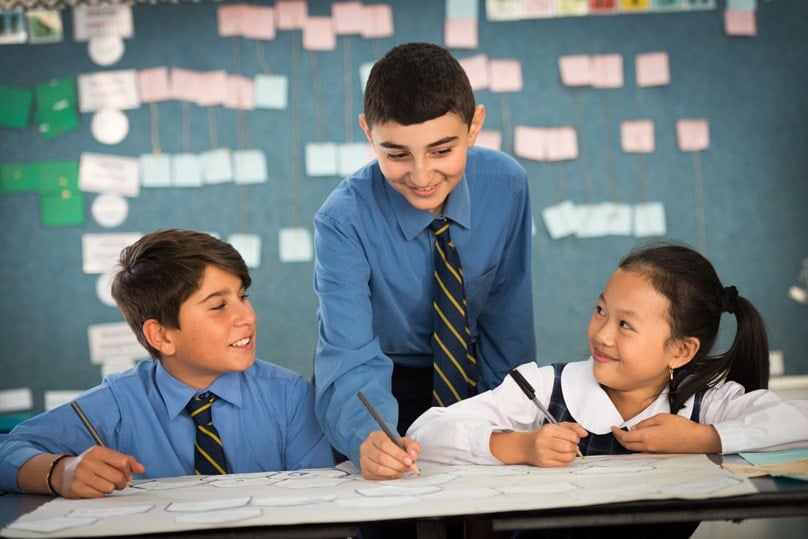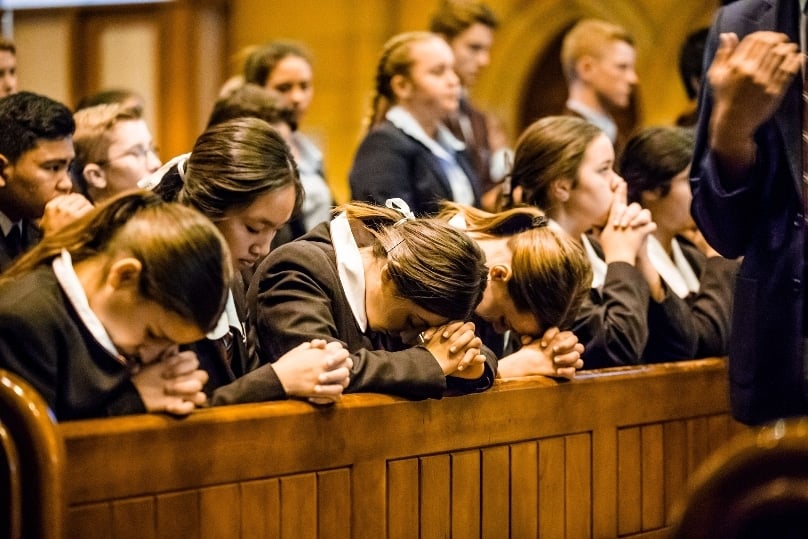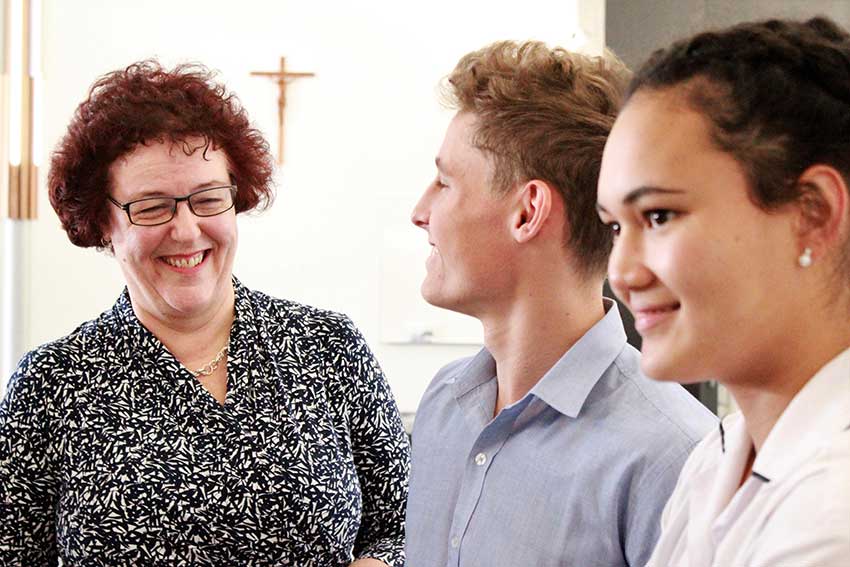
Lead economist says Catholic schools save money and build societies
A new global report has highlighted the impact of the COVID-19 pandemic on Catholic education and the unique contribution it offers to a world faced with the potential for “the deepest recession since the Great Depression”.
The Global Catholic Education Report 2020 is the first of its kind. It highlights the achievements of Catholic education as the “largest non-governmental school network in the world” delivered to more than 62 million students from preschool to Year 12 in more than 220,000 schools in both developing and developed countries.
It finds that Catholic schools save governments US$ 63 billion in 38 countries and also contributes to human capital wealth (measured as the present value of the future earnings of the labour force) to the tune of US$12 trillion.
It estimates that worldwide, nine out of 10 students have been adversely affected by temporary school closures, with those from disadvantaged families most at risk of dropping out of school or gaining poor education outcomes.
Challenges as Catholic education in Australia approaches major milestone
The report comes as Australia prepares to mark 200 years of Catholic education in this country in 2021.
It also coincides with a warning from the Melbourne-based Mitchell Institute that around 1.4 million preschool and schoolchildren are in families likely to be experiencing employment stress in 2020 due to the effects of the pandemic – at an increase of 780,000 children, or average increase of around 130 per cent across the country.
That includes almost 130,000 school and preschool children from Catholic schools, according to the Australian report.
Lead economist for the World Bank Quentin Wodon authored the international report in a “personal and volunteer capacity” as a project manager with the International Office of Catholic Education (OIEC) and a distinguished research affiliate with the Kellogg Institute for International Studies at the University of Notre Dame in the US.

Valued the world over as providers of quality education, Catholic schools also place an emphasis on values and integral human development and respect for people of all faiths, the report said.
But it highlights challenges worsened by the pandemic, with parental job losses risking a shift of students from fee-paying Catholic to fully state-funded schools and the remote learning needs in the case of school closures weighing more heavily on lower income and other disadvantaged families.
Executive director National Catholic Education Commission Jacinta Collins agreed with the findings, saying that while the immediate impacts of school closures varied between states and schools “it is becoming clear that students who were already experiencing disadvantage pre-COVID will be most affected”.
“it is becoming clear that students who were already experiencing disadvantage pre-COVID will be most affected”
“We are undertaking significant work to identify students in need and deliver the support they require to overcome the obstacles created by the pandemic and get their education back on track,” Ms Collins said.
“Curriculum authorities and education bodies are also providing advice and support to minimise loss of learning time and negate the impacts of the pandemic, for example cancelling NAPLAN for this year, and changes to assessment and exam requirements for Year 12 students.
“We will also need to monitor and respond to the longer-term impacts of the pandemic on students and families, such as employment stress, and the impacts on mental health and wellbeing.
“We anticipate this stress will be reflected in poorer learning and wellbeing outcomes for some students.”
Catholic Schools NSW chief executive officer Dallas McInerney welcomed the report as a “significant contribution” to documenting the benefits of Catholic education and a “good reminder that this is a global mission we have”.

“Catholic education and the school sector generally did very well in a short period of time to provide a temporary solution for schooling during the COVID-19 shutdown, but without a doubt the best place for learning for students is in class with their teachers,” Mr McInerney said.
“That’s particularly the case for faith-based schools. When there is a faith element that’s a bit more difficult to impart via technology and being in situ with the person sharing it counts for a whole lot more.”
Professor Renée Kӧhler-Ryan, who teaches education students at the University of Notre Dame in Sydney, said that the COVID-19 pandemic has interrupted children’s learning sometimes at “key moments”.
“What’s most concerning is that developing countries are the hardest hit,” she said.
“Those who don’t have access to the technological infrastructure we’ve come to take for granted are again marginalised in the current educational climate. This report highlights how economic inequity affects education. As Catholic educators we need to be concerned about this because this is an issue of social injustice.”
According to the global report, “a robust network of Catholic schools may be beneficial in several ways” including provision of better–quality education and a choice for parents and the building of stronger communities.
“Perhaps most importantly, Catholic schools have a long tradition of serving the poor, or at least trying to do so,” it said.
However, the challenges of implementing the preferential option for the poor “will be magnified by the current crisis”.
‘In some countries, the ability of Catholic schools to serve the poor may be threatened, not only because some children in poverty may drop out of schools or shift to public schools, but also because the resources available to Catholic schools to provide free or subsidised education are likely to be reduced.
“Ensuring that Catholic schools can pursue their mission in the current context will be challenging, but the benefits of doing so will be reaped for many years to come.”
Catholic education worldwide
- More than 62 million students from preschool to Year 12 in more than 220,000 schools
- Saves governments in 38 countries US$63 billion
- Produces human capital wealth (measured as the present value of the future earnings of the labour force) of US$12 trillion
- Africa has the highest growth in enrolments with 55.5 percent of all children enrolled in K-12 schools
- Schools’ investment in the “spiritual capital” of staff, teachers and principals, benefit students and wider communities.
Source: Global Catholic Education Report 2020
Catholic education in Australia
- One in five (768,000) school-aged children attend a Catholic school
- 1,751 Catholic schools educate more than 768,000 children
- Most low-fee schools operate alongside public schools offering a choice of faith-based education for families
- Almost 40 per cent of Catholic schools are outside major metropolitan areas, including majority indigenous schools and boarding schools
- Catholic schools employ more than 98,000 teaching and non-teaching staff, including part-time staff
Source: NCEC
Related articles:
CaSPA 2020 prepares to celebrate 200 years of Catholic Education
Catholic schools offer fee relief to struggling families
Danger: the threats to Australia’s Catholic schools
